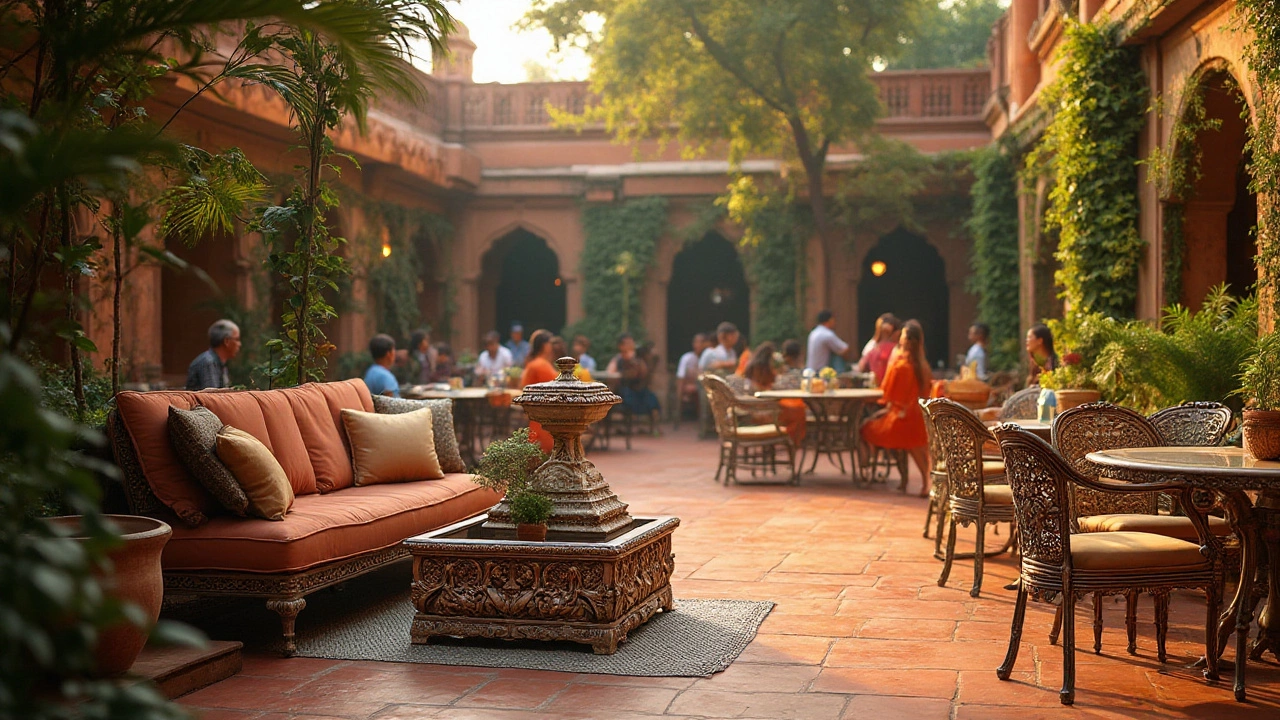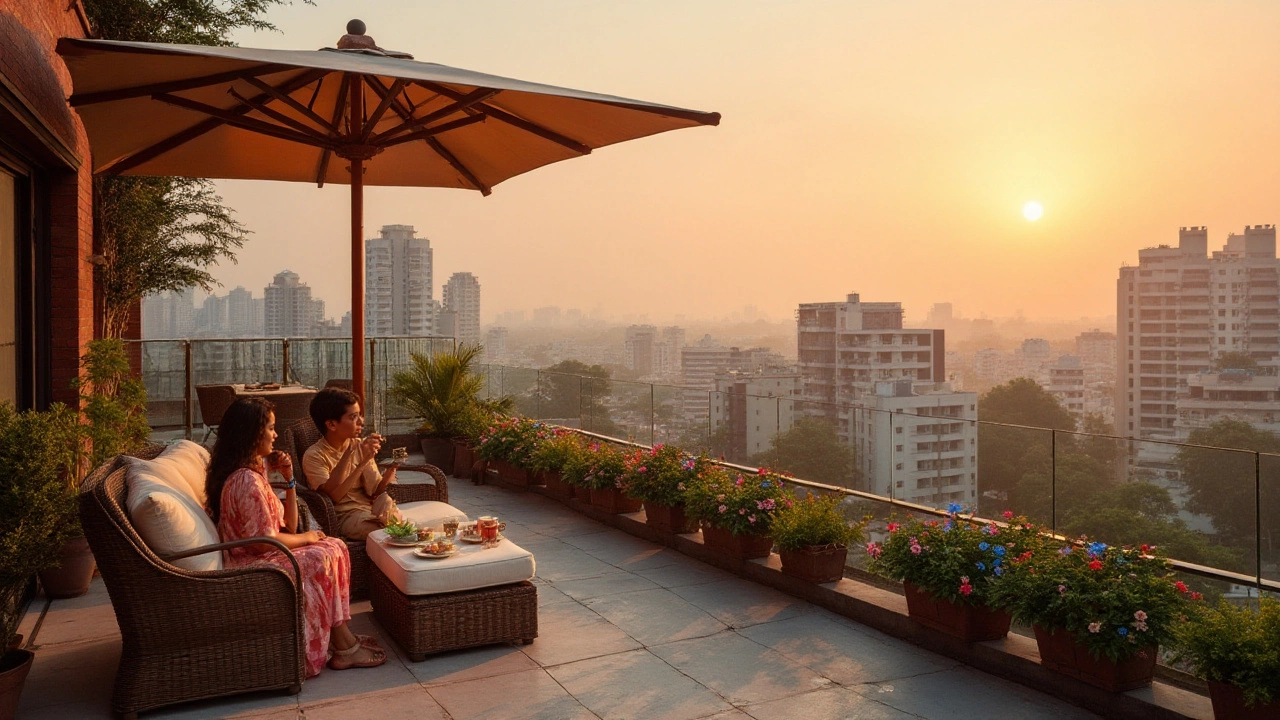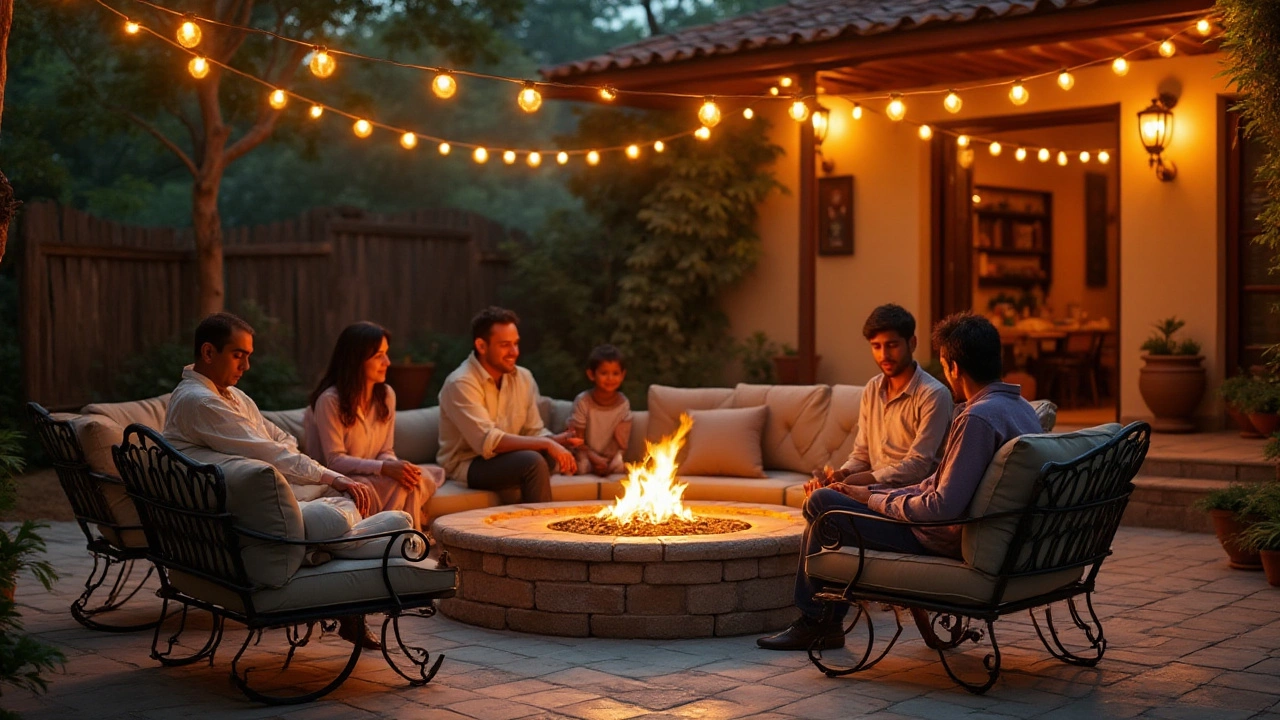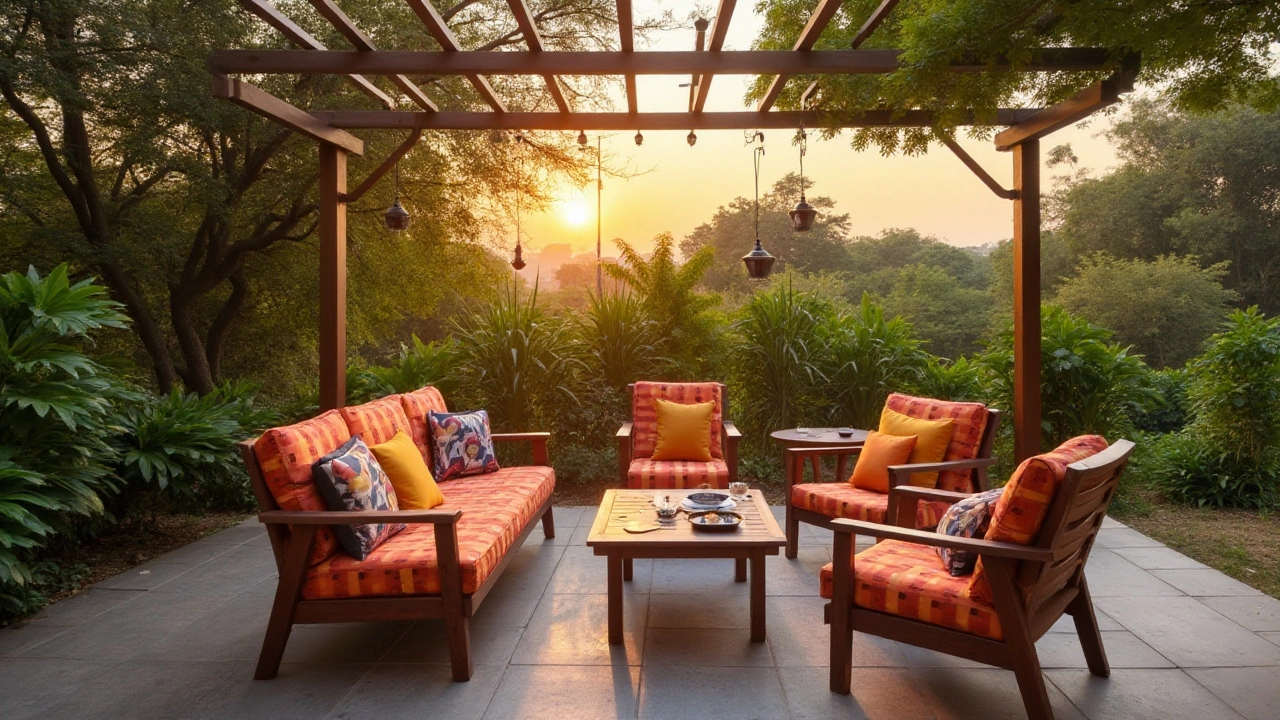When it comes to outdoor furniture, durability is just as important as style, especially if you want pieces that last through all weather conditions. With an array of options out there, picking furniture that can withstand time and elements becomes crucial.
Among the choices, understanding the right material can make all the difference. Imagine enjoying that perfect sunny afternoon in a comfortable chair that doesn’t need constant care. In this guide, we’ll explore some of the toughest options available, helping you choose furniture that suits your outdoor space’s needs and your personal taste.
Materials for Outdoor Furniture
When selecting the perfect outdoor furniture, material choice plays a significant role in determining how well your furniture stands up to the elements. Outdoor furniture needs to withstand diverse conditions, from fierce sun and rain to frost. Wooden furniture, such as teak and eucalyptus, often tops the list due to their classic aesthetic and natural resilience. Teak, in particular, is renowned for its rich color and ability to naturally repel water thanks to the oils in its dense grains, making it less likely to warp or crack. Eucalyptus provides much of the same water resistance at a more affordable price, though it does require annual sealing. If not maintained, these woods can gray over time, which adds a rustic charm to some, though not everyone prefers this patina effect.
Metal options like aluminum and cast iron also offer sturdy solutions. Aluminum is lightweight, doesn't rust, and it's easy to move around, making it ideal for versatile patio setups. In contrast, cast iron boasts a heavier, more secure presence that can withstand strong winds without budging. Nevertheless, uncoated iron will rust over time, especially if you live in salty air locales, making treatments critical for longevity. Steel is another metal worth considering, combining strength and style, with powder coatings enhancing its protective properties. Take into account that while metal may heat up under direct sunlight, new coatings can mitigate this warming effect.
According to Garden Design Magazine, "Choosing furniture made of the right material ensures you enjoy the full outdoor experience without buying replacements year after year." This sentiment highlights the balance of initial investment and long-term benefit, showing that the more you consider the specifics of the material, the less you'll worry about future wear and tear.
Plastic and resin have gained popularity for those focused on low maintenance and modern flair. Synthetic wicker and rattan mimic the elegance of traditional designs without the risk of splintering or degrading under UV exposure. These materials are often reinforced with materials that thwart off fading, cracking, or brittling, while also being considerably lightweight and easy on the budget. The recyclability of certain plastics contributes to environmental efforts, appealing to those with sustainable practices in mind. Ensure the brand you choose is of high quality, as lower-cost options may compromise longevity.
While each material has its pros and cons, the decision ultimately comes down to your personal preferences and the specific climate your garden furniture will face. Combining different materials in one suite can offer a balance of style and durability. For example, a robust aluminum frame with teak accents captures the best of both worlds. Remember that investing in quality tends to reward with longer satisfaction and reduced caring efforts, freeing up precious time to enjoy the great outdoors.

Designs and Styles
Outdoor furniture has evolved significantly over the years, offering a stunning array of designs and styles that can transform any garden into a personal sanctuary. Each design not only serves an aesthetic purpose but is also crafted to withstand the natural elements, providing both beauty and practicality. Outdoor furniture must blend seamlessly with the outdoor décor while also being robust enough to endure the punishing sun, rain, and wind. Traditional designs made from sturdy teak, with their rustic appeal and honey-toned richness, remain timeless. The minimalist designs in metallic frames, which add a touch of modern elegance to any patio, have gained popularity as well.
For those who prefer eco-friendly options, recycled plastic furniture has made remarkable strides in both design and sustainability. These pieces often mimic the natural grain of wood while delivering exceptional resistance to weather. Modular designs are also on the rise, allowing homeowners the flexibility to rearrange seating arrangements depending on their needs. This versatility makes them a practical choice for entertaining guests.
"The best furniture is like a good companion — both stylish and dependable," remarks Gina Combs, a renowned outdoor design expert. Her insight highlights the importance of choosing furniture that speaks to one's personal style while promising enduring functionality.
Designs influenced by cultural aesthetics offer unique charm, such as the intricate wicker patterns inspired by traditional weaving techniques. These pieces bring a sense of warmth and artistry to modern outdoor settings. Strong, durable garden furniture crafted from wrought iron is not only visually appealing but is also known for its ability to withstand heavy winds and rains. Opting for bold colors and patterns can create eye-catching focal points that energize the outdoor space. Durable garden furniture isn't just about materials; it's about crafting experiences, whether it's a cozy corner for a quiet afternoon read or a spacious center for lively gatherings. Style preferences vary, and the key lies in harmonizing these choices with practical needs.
To cater to diverse tastes, manufacturers are producing hybrid materials offering enhanced resilience. For instance, aluminum framed chairs with UV-resistant fabrics not only provide comfort but are also lightweight and easy to move. As these options continue to grow, selecting patio seating that echoes personal lifestyle and expectations becomes both exciting and daunting. Ultimately, it's the blend of aesthetics and durability that ensures a flourishing outdoor living space, ready to weather any storm or soak in the brilliance of a sunlit day. Tables below depict popular materials and their attributes.
| Material | Durability | Style Factor |
|---|---|---|
| Teak Wood | High | Timeless |
| Aluminum | Moderate | Modern |
| Recycled Plastic | High | Eco-Friendly |
| Wrought Iron | High | Classic |

Climate Considerations
Choosing outdoor furniture that can withstand the specific climate of your region is vital to avoid having to replace it prematurely. For those who live in areas with harsh weather conditions, such as intense sun, excessive rain, or high humidity, selecting the right materials is not only a preference but a necessity. Aluminum and synthetic resin are popular choices for withstanding extreme weather. Aluminum is lightweight, rust-resistant and can withstand both wet and dry conditions, making it an excellent choice for coastal regions where salty air can corrode metals. Meanwhile, resin furniture is often praised for its durability and low maintenance.
In contrast, if you're living in places with mild weather, you might have more flexibility with your choices, including wooden furniture options like teak. Teak is famous for its natural oils that resist water and decay, proving to be a stalwart choice in areas with moderate rain and sun. Whereas you might adore the rustic charm of wooden furniture, keep in mind that maintenance would be essential to prolong its life, involving regular application of sealants and oils. That being said, always keep in mind that protection from direct sunlight can significantly extend the lifespan of any material.
According to a report by the National Association of Home Builders, the average lifespan of quality outdoor furniture can range greatly depending on the material and climate considerations. A simple yet effective tip is to utilize furniture covers when pieces are not in use, particularly during off-season. These covers not only shield your investments from the elements but can also prevent unnecessary wear and tear, saving you both time and money in the long run.
"The right furniture, sheltered properly, can sustain its vigor and style even under the harshest of conditions," suggests Dr. Martha Stewart, an expert in outdoor living furniture.
Those living in windy areas should also consider the weight of their garden furniture. Lightweight pieces may be easily overturned or relocated by strong gusts, posing a safety hazard. Heavier materials such as wrought iron or stone not only withstand wind but also provide a more solid base for sheltering in high winds. However, remember that these options may require more maintenance in other climates. While you're considering climate impacts on your outdoor furniture selection, remember that heat absorption is also an important factor. Dark colored materials or metals can absorb heat and get excessively hot on sunny days, which might limit their usage during peak daylight hours.

Maintenance and Longevity
Ensuring your outdoor furniture stands the test of time is largely a matter of proper maintenance. While most pieces are crafted to endure the elements, a little care can significantly extend their life span. Start by understanding the specific needs of the material your furniture is made from. For example, teak and other hardwoods might require a periodic application of oil to keep their rich color and prevent weathering. In contrast, synthetic materials such as resin wicker can generally be hosed down to remove dirt and debris. To further protect your furniture, consider using covers during harsh weather or if it won’t be in use for extended periods.
Don’t overlook the importance of regular cleaning, as accumulated dirt and grime can lead to wear. A gentle cleanser and a soft cloth suffice for most surfaces, but stubborn stains might need specialized cleaning products. For metal furniture, vigilance against rust is essential; a protective finish or a fresh coat of paint every few years can ward off corrosion. Regular tightening of bolts and screws ensures the integrity of your pieces. It might surprise you, but investing a small amount of time in these tasks can prevent bigger, more costly repairs down the line.
According to experts, like those at Better Homes & Gardens, "routine maintenance and conscientious upkeep of your outdoor seating and dining sets will not only maintain their appearance but ensure a reliable fulfilling of their intended function for years." By scheduling regular checks—think of it as an outdoor spring cleaning ritual—you cement your furniture's longevity and conserve its intrinsic value.
Weather conditions in your area play a significant role in determining the required maintenance. If you reside in a damp or humid climate, more frequent checks are prudent to prevent mold or mildew buildup and to ensure your wood stays sealed against the moisture. Conversely, in sunny locales, the emphasis would be on minimizing sun damage, which might involve investing in UV-protective treatments or even positioning furniture in shaded areas. Though it might seem demanding at first, incorporating these steps into a routine soon becomes second nature, making your outdoor ambiance inviting year after year.
Many manufacturers provide specific care instructions—consult these resources to avoid inadvertently damaging your investment. By adopting a proactive rather than reactive approach, you help ensure your garden furniture continues to serve its purpose beautifully. In summary, recognizing when to sequester or shade your pieces can make all the difference. There is no substitute for diligence when it comes to preserving outdoor treasures, but the rewards of a comfortable, aesthetically pleasing outdoor space are well worth the effort.

